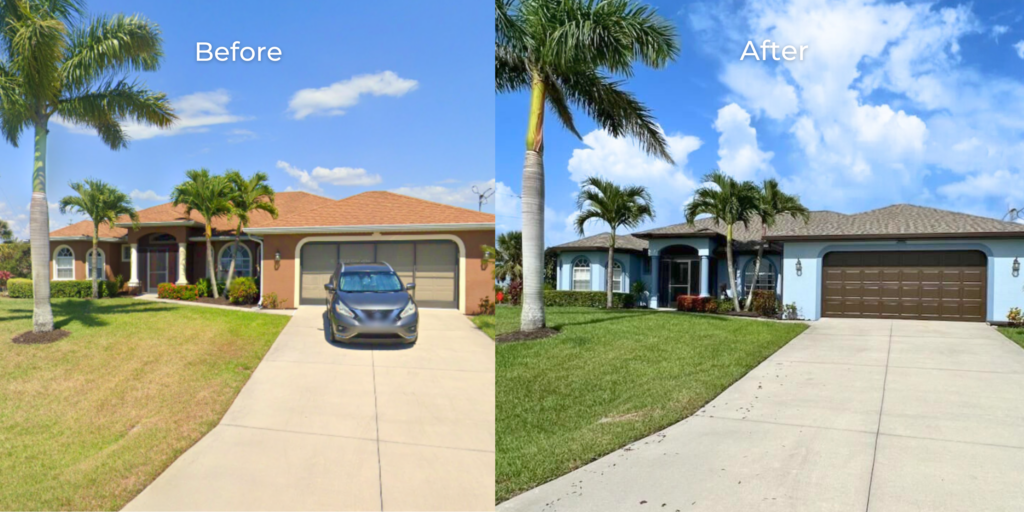Looking at the calendar and weather predictions, you’ve decided that this weekend would be an excellent opportunity to finish that exterior painting project you’ve had on hold for too long. That’s fantastic news! It is important to note that if you do not properly prep the surface before putting paint to it, the paint will either not adhere effectively or will not stay as long as you had planned.
You might wonder why it’s so critical to clean and prep your outside surface before painting. It appears to be in good condition. It seems to be working fine. Unfortunately, even if something appears to be clean and in fine working order, it most likely is not.
Preparing your outside surface for paint application and aesthetically upkeep is easy when you follow our fast guide.

What exactly is surface preparation?
Preparation of the surface is exactly what it sounds like. It is the process of prepping a surface for painting. Cleaning your surface is referred to as surface preparation. It is a process that involves scraping, restoring, and sanding your surface. Additionally, it entails the use of a high-quality primer. As straightforward as that may appear, it is not.
The cleanup process entails removing accumulated dirt, oil, mildew, and other contaminants from the area. This is not always visible or easy to clean. Scrape away old paint and uneven edges. Cracks and holes should be fixed, and then the entire surface should be sanded to create an even, smooth surface. A primer that is compatible with the material must be chosen and applied uniformly.
It is a time-consuming and challenging task. Many homeowners just do not have the know-how, and hence do not.
Underestimating the value of surface preparation is a mistake. This is a critical phase in the interior painting process. Preparation is key whether the surface is new and unpainted or old and previously painted, as both versions must be right for your property.
- Clean- Cleaning is one of the most overlooked components of any painting project, especially exterior work. The outside of your property collects a variety of elements, such as dust, dirt, grime, and even moss. Even if the surface is clean enough, painting on it will be a waste of time and effort. To start, use a sponge and warm soapy water to scrape dirt and grime from the exterior of your home. If mold is present, you’ll have to do a little extra work and possibly use bleach. For the greatest results, many painters will use a high-pressure cleaner, so if you happen to have one lying around, put it to good use!
- Allow It to Dry-This may seem crazy, but paint, priming, and caulking do not cling well to moist surfaces. Pre-paint washing will cause your siding to become wet, and if you used a pressure washer, it may remain wet for several days. Always come down on the side of caution and allow several days for the surface to totally dry before continuing. For those of you who are pressed for time to complete the job, downtime might be unpleasant, but this stage does not need any physical effort on your behalf.
- Sand & Scrape- After properly cleaning the property, it’s a good idea to inspect the exterior for places that require scraping of peeling or bubbling paint. Eliminating these stray particles of paint can improve the adhesion of new paint to a freshly prepared surface. Sand down any peeling paint areas to provide a smooth surface and uniform appearance.
- Repair- Many homes have damage, from missing caulking around windows to nail holes that need to be patched before painting. Repair these areas around your home so that when it’s time to paint, you won’t have to stop to fix them. Professional painters spend a lot of time prepping an area before painting it. It’s well-known that properly prepped surfaces allow for greater glue adhesion and longer-lasting products.
- Priming– Before painting, this is the final and most critical stage in surface preparation. Normally, paint doesn’t adhere well to bearskin, but it adheres very well to primed wood or metal. When you prime the exterior of your house, the paint will adhere better and last longer. Dark hues and persistent stains that may otherwise seep through your freshly applied coat of paint are also blocked and sealed in by the primer.
The Conclusion
Along with these points, keep in mind that you should plan your paintwork from the start. Schedule a sunny day to complete the task and keep in mind that, unless you are an expert, it will likely take longer than you think, especially when all the prep work is included. You can always contact Apex Painting Group if you have any queries or would like us to handle the work for you. Wishing you the best of luck painting your exterior this summer!

